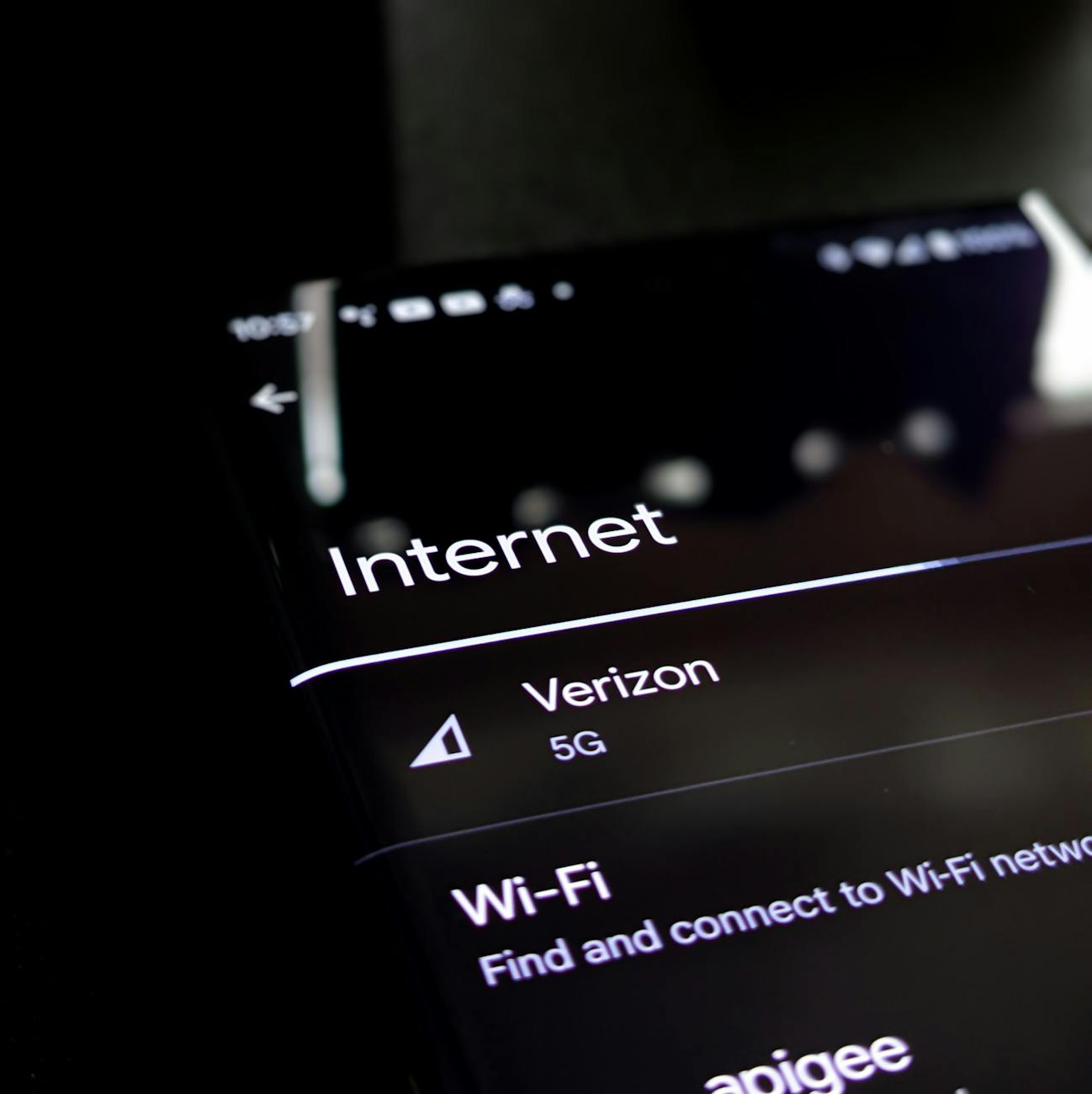Innovations in Mobile Communications Encryption
Mobile Communications Security Overview
Mobile communications have changed the game on how folks connect, but with this convenience comes the lurking threat of information theft. Let’s take a look at how encryption keeps your secrets safe when using networks like LTE, 5G, and VoIP. And yeah, we’ll chat about some blunders in cryptographic practices that can leave your data hanging out to dry.
Importance of Encryption
Without encryption, all the private chats you’re having could be as public as a town crier’s announcement. Encryption acts as your digital lockbox, using algorithms to scramble your readable info into nonsense that’d only make sense to those with the magic key. Here’s why this matters:
- Data Confidentiality: Only the cool kids with the right key get to peek into your data.
- Integrity: Keeps your info from being tampered with by nosy interlopers.
- Authentication: Verifies you’re talking to who you think you’re talking to.
- Non-repudiation: Can’t deny sending that message!
The Advanced Encryption Standard (AES) ain’t just for the tech geeks. It provides a fortress-like protection for sensitive data in government and commercial settings. And as hackers shape-shift into more devious forms, encryption techniques keep pace, evolving to stay one step ahead.
Common Cryptographic Failures
So the algorithms are strong—awesome! But without savvy handling, things could still hit the fan. Here’s where organizations sometimes goof up:
- Weak Encryption Algorithms: Dusty algorithms like DES are easy prey for hackers today.
- Poor Key Management: Keys not kept under tight security are like leaving your car unlocked in a sketchy part of town—bad idea.
- Sensitive Data Exposure: Leaving data loosely guarded invites breaches, as seen in blunders like the Exactis Debacle and Facebook oopsies.
- Implementation Flaws: Developers are human too—sometimes they mess up the code, unintentionally giving hackers a backdoor.
- Inadequate Security Controls: Skipping on backup plans like multi-factor authentication or secure data practices can lead to disaster.
Organizations should:
- Regularly update and patch their encryption strategies.
- Conduct security audits like clockwork.
- Lock down data handling processes.
- Have a breach plan ready to launch at the first sign of trouble.
The infamous 2019 Facebook Data Leak is a prime lesson—over 540 million records went poof due to slack database management. That’s a ton of exposed info that should’ve been treated like top-secret files. Keeping up with robust security measures isn’t a suggestion; it’s a must.
Knowing how encryption works and spotting its pitfalls isn’t just for IT geeks. It’s crucial for anyone trying to protect what’s theirs in this mobile-first era.
Encryption Standards in Government
Role of the U.S. Government
For longer than some folks have been alive, the U.S. government has been at the helm when it comes to setting encryption standards, guiding the tech world to ensure our secrets and data don’t become anybody else’s business. This quest for ultimate security was reinforced in May 2021 when President Biden signed off on an executive order. This wasn’t just any memo—he told federal agencies to beef up security by encrypting data both when it’s stored and when it’s being sent across the wires, all with some help from the trusty Advanced Encryption Standard (AES) (Samsung Insights).
Advanced Encryption Standard (AES)
Way back when flared jeans were cool, the National Institute of Standards and Technology (NIST) decided AES was the way to go for government encryption. Since then, AES has shimmied its way to being the global go-to for data security (Samsung Insights). Whether it’s sleeping data, online shopping carts, or apps hiding behind a VPN veil, AES gets the job done with style.
It’s like a bouncer at a club—show these three key lengths to see what kind of VIP data you shoulder:
- AES-128: Your go-to for “secret” level stuff. It’s like the regular member of the secure club.
- AES-192 & AES-256: These guys are the real deal, guarding “top-secret” info like nobody’s business.
| AES Key Length | Use Case |
|---|---|
| AES-128 | Secret Level Information |
| AES-192 | Top-Secret Level Information |
| AES-256 | Top-Secret Level Information |
Future of Encryption Algorithms
As we gaze into the crystal ball, NIST is busy cooking up fresh algorithms for public-key encryption. Why, you ask? Because the boffins tell us quantum computing is the next big thing, and it could mess up today’s encryption. NIST is on the clock with a new game plan expected by 2024, promising to keep our digital chatter out of alien hands.
This isn’t just bureaucracy at its finest—it’s how Uncle Sam keeps his digital house in order in a tech world that’s changing faster than you can say “download speed.”
End-to-End Encryption (E2EE)
End-to-end encryption, or E2EE, is like a secret code only you and your buddy can break, making it a powerhouse in keeping mobile chats safe from prying eyes. Let’s unpack what E2EE means, what it does, why it’s the knight in shining armor for our privacy, and how it makes people feel safe and sound sharing their deepest secrets.
Definition and Functionality
Think of E2EE as a security bouncer ensuring your messages stay private while they journey from you to the receiver. It uses encryption voodoo that locks your message before it leaves your phone and only lets it get unlocked once it reaches its destination. This makes life tough for nosy hackers, spies, and even the service you’re using because they can’t peek at your convos (nandbox).
E2EE works with a pair of nifty keys:
- Public Key: This one locks your message; you can toss it around because it’s safe.
- Private Key: Keeps the message locked safely until the recipient with the key opens it, keeping your chats between just you two (PreVeil).
Benefits of E2EE
E2EE is like a VIP pass for mobile chats, bringing some cool perks to the table.
-
Data Security and Privacy: Your private stuff stays just that—private. Only the person you’re sending it to can read it. Nobody else has a say in it, not even those tech giants (nandbox).
-
Bye-Bye to Data Breaches: Since your chit-chat stays locked from start to finish, hackers can only see gibberish. Even sneaky peeps intercepting data can’t make heads or tails of it (nandbox).
Trust and Security with E2EE
By keeping convos under wraps, E2EE wins hearts and minds, making people trust those apps even more.
-
User Trust: With the guarantee of secured conversations, folks feel comfy exchanging sensitive info, which makes them stick around and keep using the platform.
-
End-to-End Protection: The messages stay guarded from the moment they leave ’til they arrive. Even if someone gets into the servers, your secrets stay safe.
| Feature | Benefit |
|---|---|
| Data Security | Only the person you send it to can read your info |
| Reduction in Data Breaches | Keeps info locked all the way through, making hacks less of a headache |
| User Trust | Makes sharing safe, encouraging loyalty and more activity |
| End-to-End Protection | Keeps sending and storing data secure, adding a blanket of protection |
With a grasp of how E2EE works and its goodies, tech geeks and security people can see why it’s a big deal in the world of encrypted mobile communication.
Mobile Platform Encryption
Get ready to dive into the world of mobile encryption as we crack open the latest ways to keep your data on Android devices as safe as a squirrel’s stash of nuts. For those guarding the gates of mobile security, knowing these encryption tricks ain’t just useful; it’s necessary.
Encryption Methods for Android
Android’s got more security techniques than a spy movie, mixing both file and full-disk encryption methods to lock down your data.
-
File-Based Encryption (FBE): Think of this as a magic safe where each file gets its own special key. This allows parts of your phone to wake up and start working even before you give it the secret password. It’s all part of Android’s clever security strategies (here).
-
Full-Disk Encryption (FDE): This is like covering the whole floor with one big rug. The entire userdata is locked by one key, and you need your device password to lift that rug and peek underneath.
Symmetric and Asymmetric Encryption
When Android apps are playing spy games, they use a mix of these two types of encryption to keep everything under wraps.
Symmetric Encryption:
- Mechanism: Uses the same key to lock and unlock the magic box.
- Algorithm: Advanced Encryption Standard (AES), which sounds as serious as it works.
- Key Sizes: Comes in sizes of 128-bit, 192-bit, and 256-bit to handle data blocks like a pro.
| Encryption Type | Key Sizes | Data Block Size |
|---|---|---|
| Symmetric (AES) | 128-bit, 192-bit, 256-bit | 128-bit |
Asymmetric Encryption:
- Mechanism: You get two keys—a public party invite and a private keep-to-yourself password.
- Use: Share the public key freely, but keep that private key close, adding an extra layer of secrecy (learn more).
Digital Signature Algorithms
These algorithms work behind the scenes to make sure that a message is just how it should be and that the sender is who they say they are.
Digital Signature Algorithms:
- Mechanism: These use asymmetric keys just like spies use codenames. A secret private key puts its stamp on the data, while a public key shows it’s legit.
- Algorithms: Famous ones include RSA, DSA, and ECDSA. They’re like security guards, keeping an eye on data to spot any funny business.
| Algorithm | Purpose | Security Level |
|---|---|---|
| RSA | Secure data transmission | High |
| DSA | Digital signatures | Moderate |
| ECDSA | Efficient and secure signing | High |
Grasping these encryption styles will boost your know-how and ensure your mobile data stays under lock and key. So rest easy, knowing your chats, photos, and secrets are safely stored away.
Encryption Best Practices
In mobile app world, keeping data secure is a must, and having solid encryption in place is like having a trusty lock on your door. Here’s a look at some essential tips IT analysts and security pros should follow.
Key Generation and Management
How good your encryption is depends a lot on the “keys” you use, think of them as secret codes that lock and unlock your data. Mess them up, and even the best locks won’t help (OWASP Mobile Top 10 – 2016). Here’s how to keep them in check:
- Stick to Modern Algorithms: Use the cool kids on the block like RSA, AES, or ECC. They’re trusted in the security community.
- Use Encryption APIs: Built-in APIs are your buddies for encryption tasks on mobile.
- Consider Whitebox Cryptography: If you’re super serious about security, this one helps prevent sneaky tampering.
| Best Practice | What It Means |
|---|---|
| Modern Algorithms | Like AES, RSA, ECC |
| Encryption APIs | Ready-to-use magic on platforms |
| Whitebox Cryptography | Extra layer in high-security areas |
Upgrading Encryption Standards
Staying on top of your encryption game means upgrading standards before the bad guys catch up. Weak keys are like open invites to your private data (GlobalSign Blog).
- Choose Larger Key Sizes: Go big, go home. At least 2048 bits for RSA and 256 bits for AES.
- Use Strong Hash Functions: Ditch the oldies like MD5. SHA-2 or SHA-3 are the new rockstars.
| Algorithm | Key Size You Want |
|---|---|
| RSA | 2048+ bits |
| AES | 256 bits |
| Hash Function | SHA-2, SHA-3 |
Risks of Outdated Encryption
Holding onto old encryption is like hanging onto a flip phone in a smartphone world. It leaves your data wide open.
- Ditch Outdated Protocols: Oldies like SSLv3 and early TLS versions don’t cut it anymore.
- Retire the Old Standards: Standards like 512-bit RSA and 128-bit AES are history and easy pickings for hackers.
Keeping up with the freshest standards and protocols is your best bet to secure those sensitive connections and dodge data breaches.
| Old Standard | Why It’s Bad |
|---|---|
| 512-bit RSA | Easy target for codebreakers |
| SSLv3 | Antiquated protection mechanisms |
| Early TLS Versions | Prone to modern threats |
To lock down your data in mobile spaces, these encryption best practices are key. They’ll shield your precious info and fend off the threats from weak or outdated methods.
Encryption Attack Vectors
Understanding encryption attack vectors isn’t just for fancy tech folk; it’s about keeping everyone’s private stuff, well, private. Let’s break down how bad actors exploit weak encryption, the headache that is old-school solutions, and how to beef up your digital defense.
Exploiting Weak Encryption
Hackers are like really persistent detectives—they’ll poke and prod until they find a way in. Weak encryption becomes a prime target, often because of stuff like sloppy key handling, outdated tech, or pipsqueak key sizes.
- Poor Key Handling: Imagine having the strongest safe in the world but leaving the key under the mat. That’s what poor key management does. Ditch the cryptic, custom encryption for reliable algorithms and cutting-edge encryption APIs. If you wanna geek out more, check out OWASP Mobile Top 10 – 2016.
- Tiny Key Sizes: If your keys are puny, you’re inviting trouble. Size matters folks—1024 or 2048 bits for RSA and 256 bits for AES, or else it’s like handing a crook a skeleton key. Here’s where GlobalSign dives deep: GlobalSign Blog.
- Outdated Algorithms: Sticking with old algorithms like 512-bit RSA or 128-bit AES is like using dial-up in a fiber optic world. Get with the times, and embrace SHA-2 or SHA-3 to keep those digital wolves at bay. Again, GlobalSign smashes myths over here: GlobalSign Blog.
Addressing Legacy Solutions
Holding onto legacy encryption is like keeping a floppy disk—nostalgic, but downright dangerous nowadays. Tackling these aged issues head-on is non-negotiable for trustable security.
- Kick Out Old Protocols: Put SSLv3 and the primitive TLS versions in the past. TLS 1.3 is your new best pal when it comes to safeguarded communication. Here’s why GlobalSign has a say: GlobalSign Blog.
- Update or Detonate: Relying on outdated systems is like driving a car with square wheels—update to modern, robust standards for a smoother, safer ride.
- New Age Hashing: Grainy hash functions have no place in security; upgrade to new, tougher ones like SHA-2 and SHA-3.
| Old-School Encryption | New School Upgrade |
|---|---|
| 512-bit RSA | 2048-bit RSA |
| 128-bit AES | 256-bit AES |
| SHA-1 | SHA-2/SHA-3 |
| SSLv3/TLS <1.2 | TLS 1.3 |
Strengthening Cybersecurity Defenses
Upping your cyber defense game isn’t optional; it’s essential. Adopting these savvy practices keeps your fortress strong.
- Smart Key Moves: Good key management is like locking up Fort Knox. Use modern algorithms, encryption APIs, and maybe even consider whitebox cryptography for extra security oomph. Explore the nitty-gritty with OWASP Mobile Top 10 – 2016.
- Stay Updated: Keeping up with security standards is a long game—ditch the obsolete stuff and always aim for the latest, toughest versions.
- Get Audit Savvy: Security audits might sound dull, but they’re your detectives, hunting and fixing weak spots in your defenses.
Human Error and Data Breaches
Impact of Unencrypted Data
When people slip up, big things can happen, especially when important info isn’t hidden away securely. Skipping encryption—the step that scrambles data into a secret code—leaves everything out in the open, easy for sneaky eyes to steal. This can snowball into identity theft and other wallet-draining disasters, not to mention waving goodbye to the trust of those clients you’ve worked hard to gain.
Imagine firing off an email with sensitive details to the wrong person. Without encryption, you might as well shout it from the rooftops. Just look at what happened in February 2018, when the folks at the United States Department of Defense accidentally emailed private details of 21,500 Marines, sailors, and civilians to the wrong group. This mishap included juicy bits like bank account details and bits of Social Security Numbers (Venafi).
Common Breaches Caused by Human Error
We’ve seen some real blunders lead to big headlines, proving why beefing up security and keeping your data locked down tight is no joke.
Defense Travel System Breach
- Date: February 2018
- Incident: Whoops! Email sent to the wrong crew without any cloak of encryption
- Impact: Laid bare private info on 21,500 peeps, bank details, and all (Venafi)
Strathmore Secondary College Incident
- Date: August 2018
- Incident: Student info accidentally spilled all over the intranet
- Impact: Medical and mental health records, and more, of 300 students laid open (Venafi)
Veeam Database Exposure
- Date: August 2018
- Incident: Info stored in an Amazon spot that was open to be picked up
- Impact: 200 gigabytes of customer info, names, emails, and some IP details exposed (Venafi)
| Incident | Date | Error Type | Data Exposed | Impact |
|---|---|---|---|---|
| Defense Travel System | Feb 2018 | Unsecured email blunder | Personal info leaked | 21,500 folks |
| Strathmore Secondary College | Aug 2018 | Oops on the intranet | Student records | 300+ students |
| Veeam Database Exposure | Aug 2018 | Security slip | Customer info | 200GB lost |
These slip-ups are loud and clear reminders that we need to treat encryption and training like gold. Make sure folks know what’s at stake and how to keep the baddies out. Proper training, keeping an eye on security, and managing key access smartly, can go a long way in dodging these headaches and keeping your data safe.
Case Studies in Encryption
Defense Travel System Breach
Back in February 2018, a bit of a mishap hit the Defense Travel System (DTS) from the U.S. Department of Defense. They accidentally blasted out an email—without any encryption—to the wrong bunch of folks. This blunder revealed personal info for around 21,500 Marines, sailors, and civilians. What kind of info? Well, things like bank details, bits of their Social Security numbers, and emergency contacts were out there for the taking (Venafi). This was one of those “Whoa, encryption really matters!” moments, especially for government folks who are assumed to have their ducks in a row on security.
| Date | Affected Parties | Exposed Data |
|---|---|---|
| February 2018 | 21,500 Marines, sailors, and civilians | Bank account numbers, bits of Social Security Numbers, emergency contact info |
Strathmore Secondary College Incident
Fast forward to August 2018, when things went south at Strathmore Secondary College. One well-meaning but confused employee posted over 300 students’ records on the school’s intranet. It sounded innocent enough until you realize it included super private stuff—like medical conditions (Asperger’s, autism, ADHD), meds, and learning or behavioral notes. For a whole day, these records were up for grabs, putting a big ol’ spotlight on how schools really need solid data protection plans.
| Date | Affected Parties | Exposed Data |
|---|---|---|
| August 2018 | Over 300 students | Medical and mental health info, medication details, educational notes |
Veeam Database Exposure
In the same summer, August 2018, Veeam had some egg on its face. Someone using the Shodan search engine stumbled upon an Amazon-hosted IP that linked to one of their databases. Spoiler alert: it didn’t have a password. Inside? About 200 gigabytes of customer info, including names, email addresses, and some IP addresses (Venafi). It was a wake-up call about how crucial it is to lock things up tight with passwords and sprinkle in some encryption for good measure, especially when we’re talking cloud stuff.
| Date | Affected Parties | Exposed Data |
|---|---|---|
| August 2018 | Veeam customers | Names, email addresses, IP addresses |
Ericsson and LinkedIn Certificate Expiration
December 2018 kicked off with drama for Ericsson. Their SGSN-MME software, relied on by many, lost its digital certificate due to expiration woes. This hiccup led to service meltdowns for 32 million folks in the UK, stretching across 11 countries. Those dependent on 4G and SMS were left high and dry.
| Date | Affected Parties | Issue |
|---|---|---|
| December 2018 | 32 million UK peeps, 11 countries | Expired certificate knocking out 4G, SMS services |
Jump to November 30, 2018, and it was LinkedIn’s turn to hit the road bumps. Their digital certificate for country subdomains also decided to call it quits. Users were stuck, unable to log in for a good chunk of their day (Venafi).
| Date | Affected Parties | Issue |
|---|---|---|
| November 2018 | LinkedIn users | Expired certificate causing login headaches |
These stories showcase the tricky terrain of managing encryption in our mobile-driven lives. Keeping the walls of encryption high and firm, along with regular security checkups, is non-negotiable if companies want to keep their data safe and sound.













